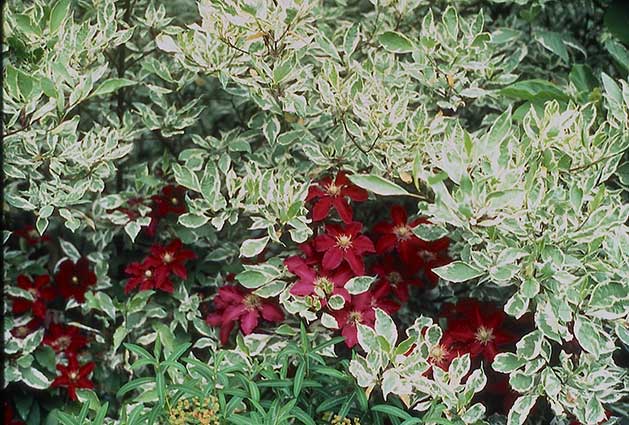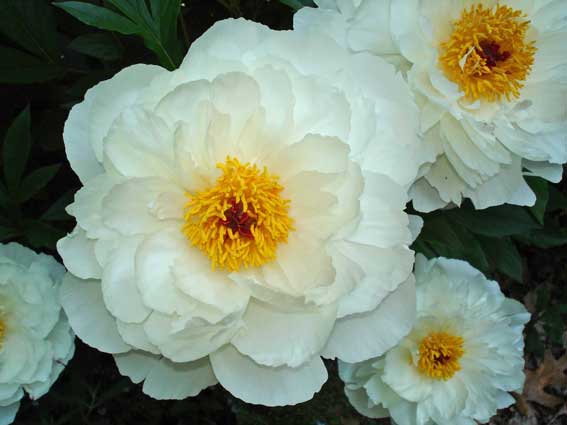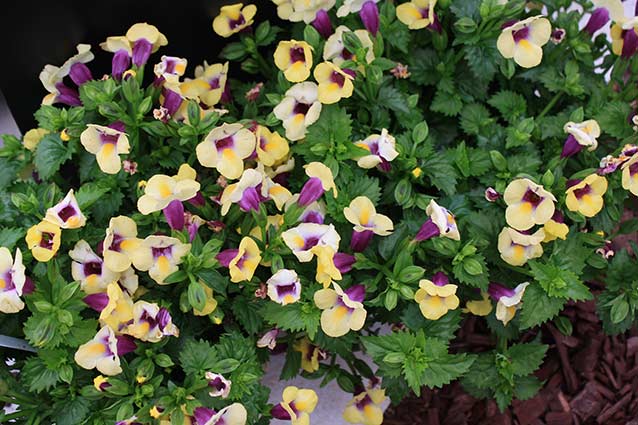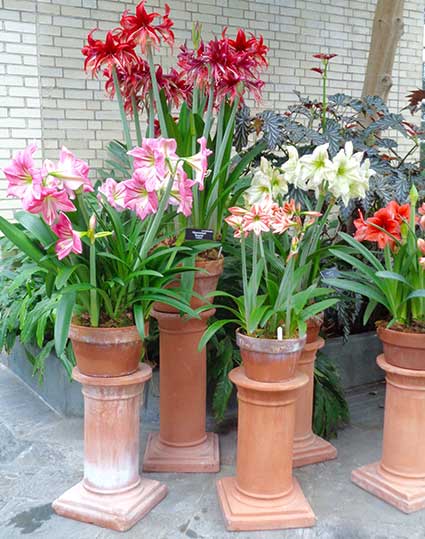How to Use Color in the Garden
Preen gives you a wide variety of ideas to put together a color palette for your garden. Learn and apply these tips and let your garden’s true colors show.
Here are some low-maintenance gardening tips so you have more time to enjoy your garden.
How many times have friends said to you ”…I have no time for a garden” while admiring yours? Here are some easy, low maintenance gardening shortcuts. You can share these with your friends and also use them yourself so you have more time to enjoy your garden.
Shrubs form the skeleton of your garden. Choose species that fit the size of your space. A bush that is expected to reach 6'-10' tall over 5 years is bound to outgrow the height of living room windows. Select those that need little pruning, such as Japanese skimmias (Skimmia japonica USDA Zones 7-10). This evergreen has female flowers followed by red berries on separate plants; male plants bloom too but have no berries. A grouping of two females and a single male is fine. The sexes should be labeled in the nursery. For colder climates ‘Elegantissima’ redstem dogwood, (Cornus alba 'Elegantissima' Zones 2-8) has attractive creamy-rimmed leaves from spring through fall, when they drop to reveal scarlet stems that provide welcome winter color. Pruning a few stems to the base every few years encourages new red stems to grow. Neither of these is susceptible to pests or diseases.

The variegated foliage of 'Elegantissima' red stem dogwood provides surprise contrast to vining clematis 'Nione'. © Ruth Clausen
With perennials “low maintenance” means choosing types that seldom need to be sprayed for pests and diseases such as aphids and mildew, don’t grow to be floppy and require staking, or need to be divided every couple of years to retain vigor. A few good ones that come to mind include peonies (Paeonia), blazing star (Liatris), coral bells (Heuchera), false plume flower (Astilbe), black-eyed susan (Rudbeckia), globe thistle (Echinops) and Russian sage (Perovskia). Drought resistance is another attribute that saves work. Some perennials including Helen’s flower (Helenium), perennial sage (Salvia ‘May Night’) and Sedum ‘Autumn Joy’ can tolerate spells of drought without frequent watering. However, this is not a license to let them desiccate completely. Species resistant to deer browsing are critical where deer are a problem: blanket flower (Gaillardia), cranesbills (Geranium), and lavender (Lavandula) are good examples of deer-resistant perennials.

Peonies are reliable, low maintenance perennials. © Ruth Clausen
Look for “self-cleaning” varieties that don’t need to be deadheaded in order for the flowers to keep coming. Variegated-leaved Petunia ‘Glamouflage Grape’ is one and is very showy with foliar interest even when out of bloom; another is Supertunia ‘Pink Star Charm’ with masses of pink flowers marked with darker red. Also self-cleaning, semi-trailing Torenia ‘Yellow Moon’ is suitable for shadier spots, especially in hanging baskets. Also ask for old-fashioned sweet alyssum (Lobularia maritima), California poppies (Eschscholtzia californica), and summer snapdragon (Angelonia angustifolia) that are drought tolerant as well.

Wishbone flower 'Yellow Moon' does well in shadier places. © Ruth Clausen
Weeds tend to waltz right into open spaces in a well-tended garden. They like that rich soil as well as your plants do. To stop the weed seeds from sprouting, cover bare soil with two to three inches of mulch, then top it off with an application of Preen Garden Weed Preventer. Weeds that don’t grow don’t need to be pulled.
Planting ground covers is another low-maintenance way to keep your garden looking great. Good ornamental ground covers include bugleweed, Ajuga reptans ‘Bronze Beauty’ (evergreen mostly), brilliant blue leadwort (Ceratostigma plumbaginoides), and yellow stonecrop, Sedum rupestre ‘Angelina’, which turns brilliant orange in cold weather.
Where space is limited, try growing in containers. Almost anything – shrubs, small trees, perennials, annuals, alpine plants, veggies, salad crops, herbs, etc. – that will grow in the ground can be grown also in containers. Use free-draining potting soil. Bags marked garden soil or soil dug from the garden may be too heavy or harbor insects that can quickly infest potted plants. Larger containers need watering less frequently, or you can attach drip irrigation systems to a collection of plants. If you need height in the display, set pots on upturned pots, barrels, or even some pedestals or stands to elevate them. The same conditions of sun and shade apply to growing, but watering does not have to be onerous if you select and arrange plants with similar watering needs.
Following low-maintenance tips can help both seasoned and novice gardeners spend less time on garden chores and more time enjoying a beautiful garden.

The collection of potted amaryllis displays better at differing heights. © Ruth Clausen